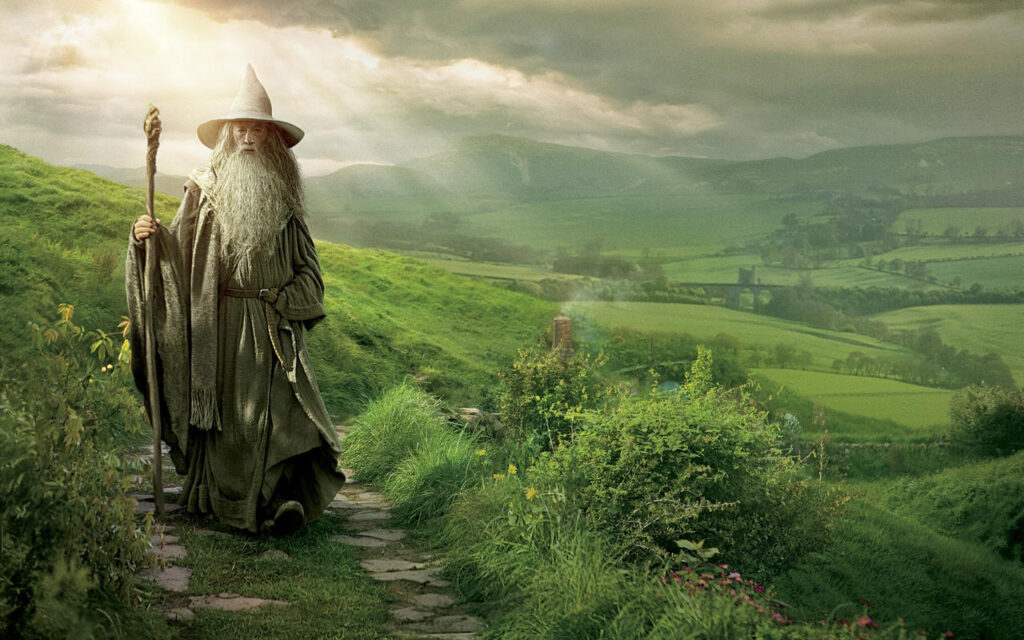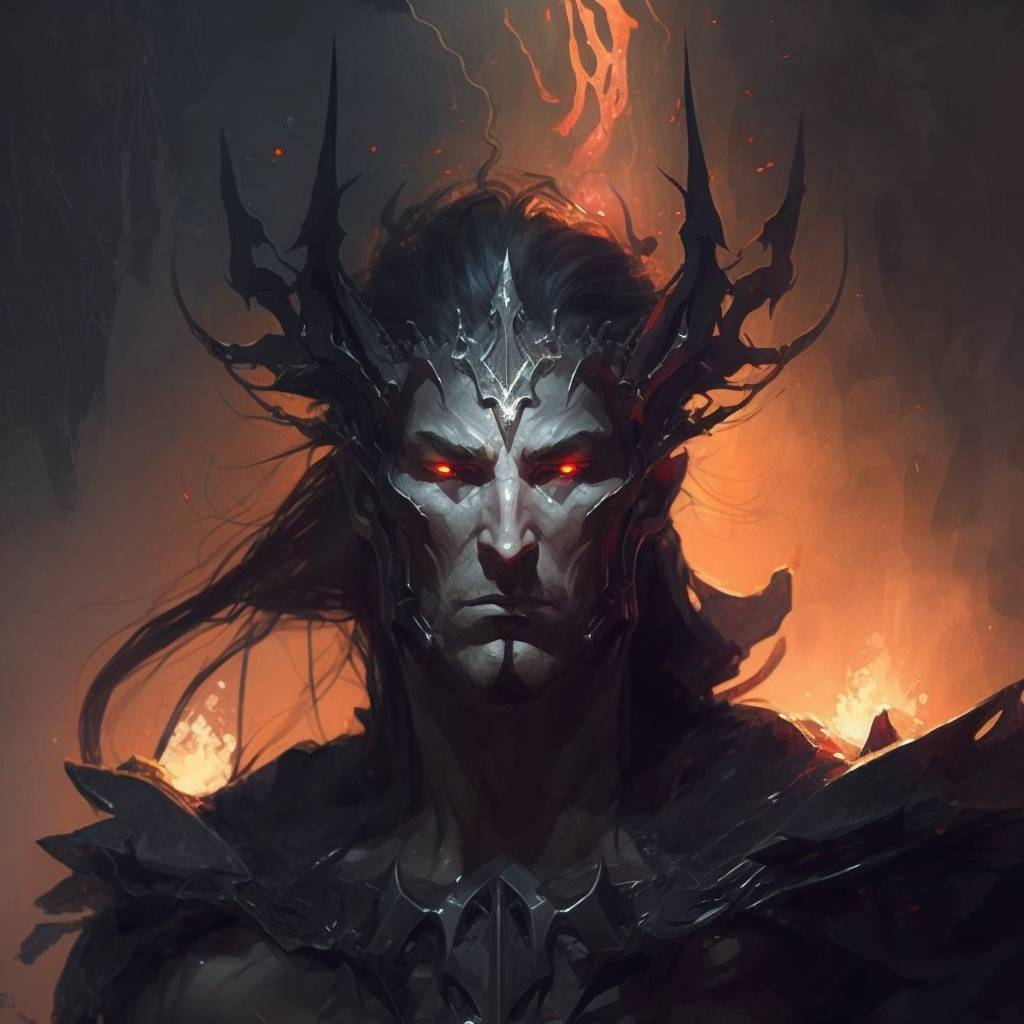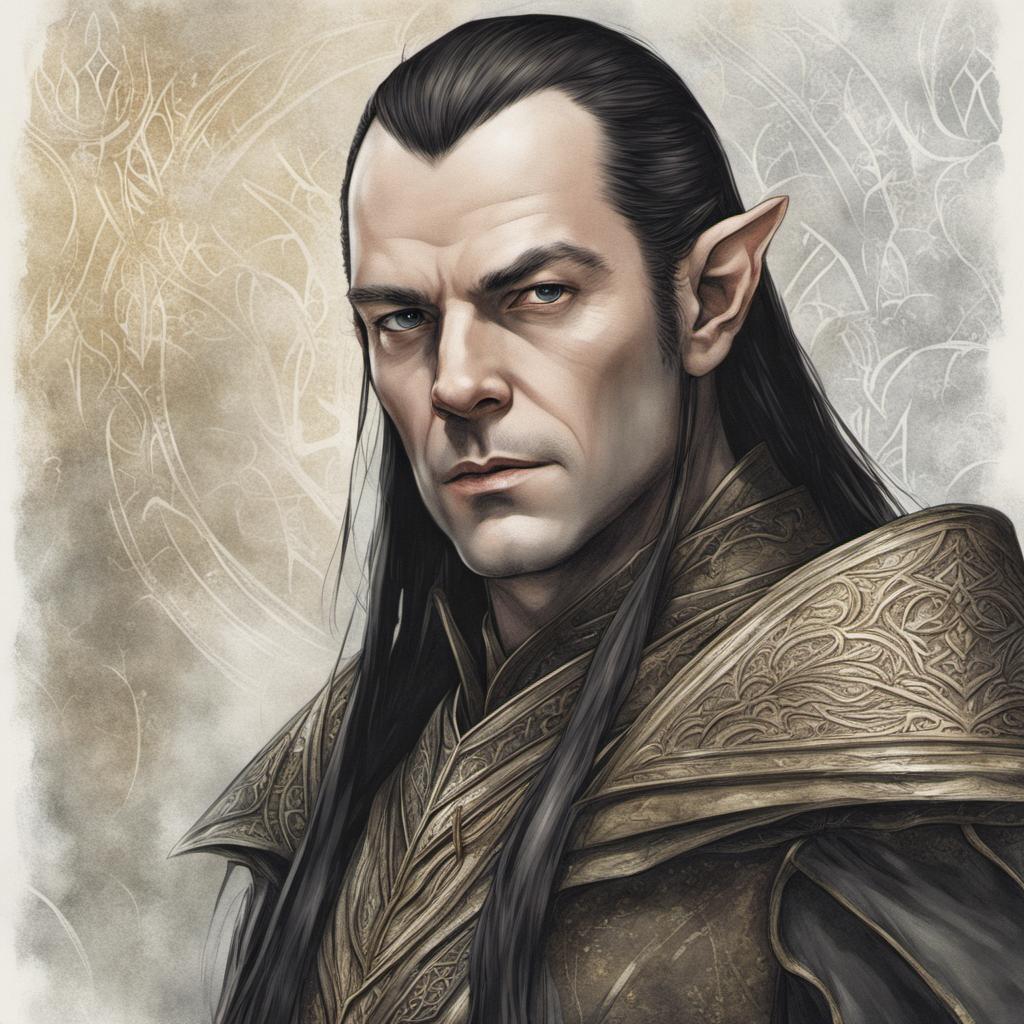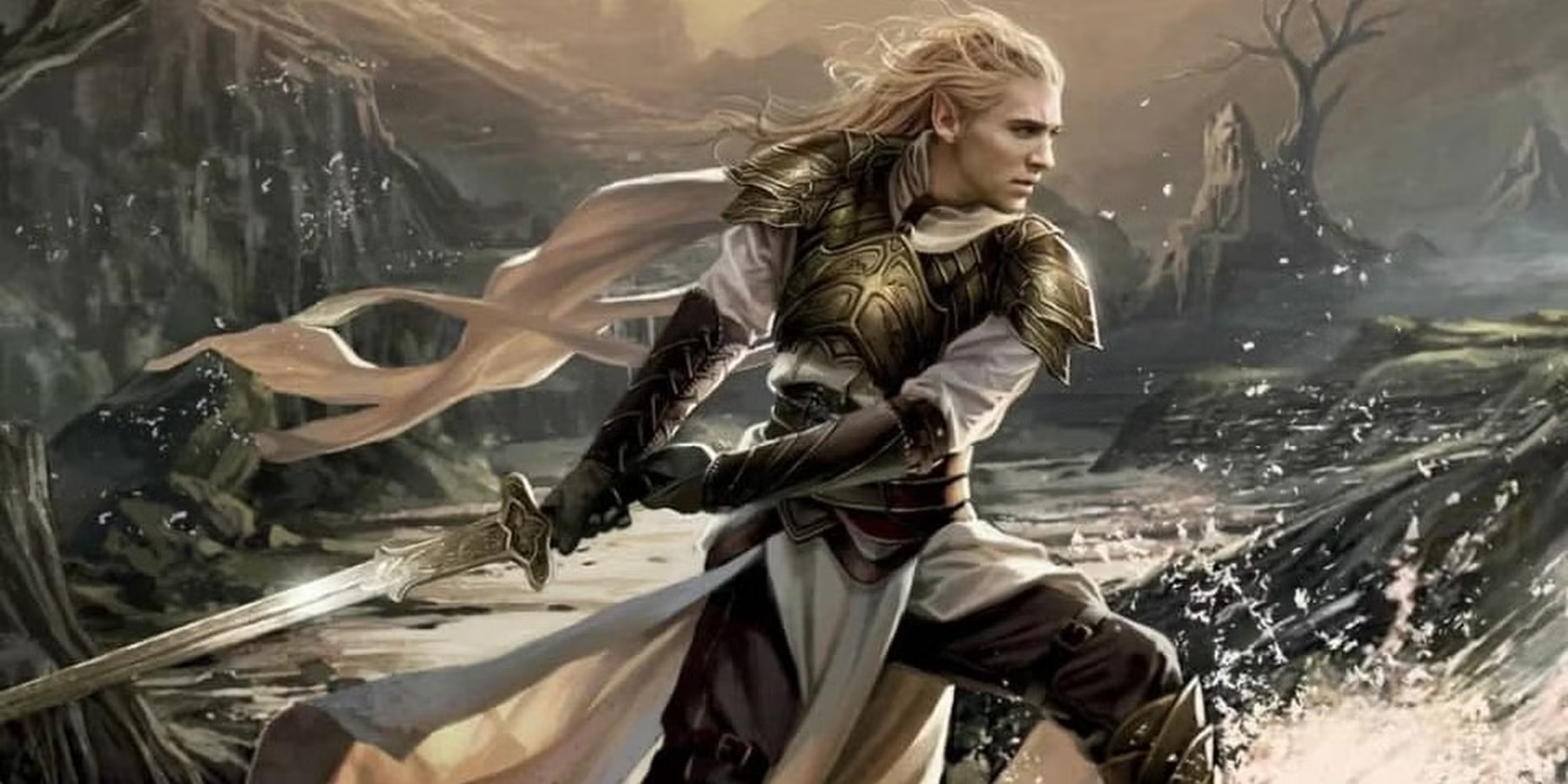Table of Contents
The Mind Behind Middle-earth: J.R.R. Tolkien
John Ronald Reuel Tolkien, the brilliant mind behind The Lord of the Rings, was not just a storyteller but also a scholar whose expertise in language and mythology shaped his legendary work. As a professor of Anglo-Saxon at Oxford, he immersed himself in ancient texts, including Beowulf, Norse sagas, and medieval romances, all of which heavily influenced his world-building. His deep fascination with linguistics led him to create multiple fully developed languages, such as Quenya and Sindarin, which added unparalleled depth to Middle-earth. Even before writing fiction, Tolkien constructed languages purely for enjoyment, later crafting mythologies to give them cultural and historical roots.
While The Lord of the Rings is a grand adventure, its emotional depth is rooted in Tolkien’s personal experiences, particularly his time serving in World War I. The horrors of battle, the loss of close friends, and the enduring bonds formed in the trenches are reflected in the novel’s themes of sacrifice, friendship, and perseverance. The landscapes of Middle-earth, from the peaceful Shire to the war-ravaged fields of Gondor, mirror his memories of pre-war England and the devastation he witnessed on the battlefield. His characters, especially the hobbits, embody the resilience of ordinary individuals facing overwhelming odds, much like the young soldiers who fought alongside him.
The Deep History of Middle-earth
Tolkien’s legendarium spans thousands of years, with each age shaping the world of Middle-earth long before The Lord of the Rings takes place. The First Age, chronicled in The Silmarillion, tells the story of the Elves’ awakening, the creation of the Silmarils, and the war against Morgoth, the original Dark Lord. Great heroes like Beren, Lúthien, and Túrin Turambar emerge in this era, battling against overwhelming darkness. The destruction of Morgoth leads to the Second Age, where Númenor, the greatest kingdom of Men, rises to power. However, its downfall comes when its people, corrupted by Sauron, attempt to challenge the divine realm. Númenor’s destruction reshapes the world, setting the stage for Sauron’s continued influence and the events that follow.
Although Morgoth is defeated, his former servant Sauron remains, using deception to regain power in the Second Age. He forges the Rings of Power, deceiving Elves, Dwarves, and Men, while secretly crafting the One Ring to control them all. The Last Alliance of Elves and Men ultimately defeats him, yet his spirit lingers. By the Third Age, The Lord of the Rings unfolds as the One Ring resurfaces, leading to a final confrontation that will decide Middle-earth’s fate. The Third Age is marked by decline, with Elves leaving for the Undying Lands and kingdoms of Men weakened. Only through the courage of unexpected heroes can Sauron’s influence be vanquished forever.
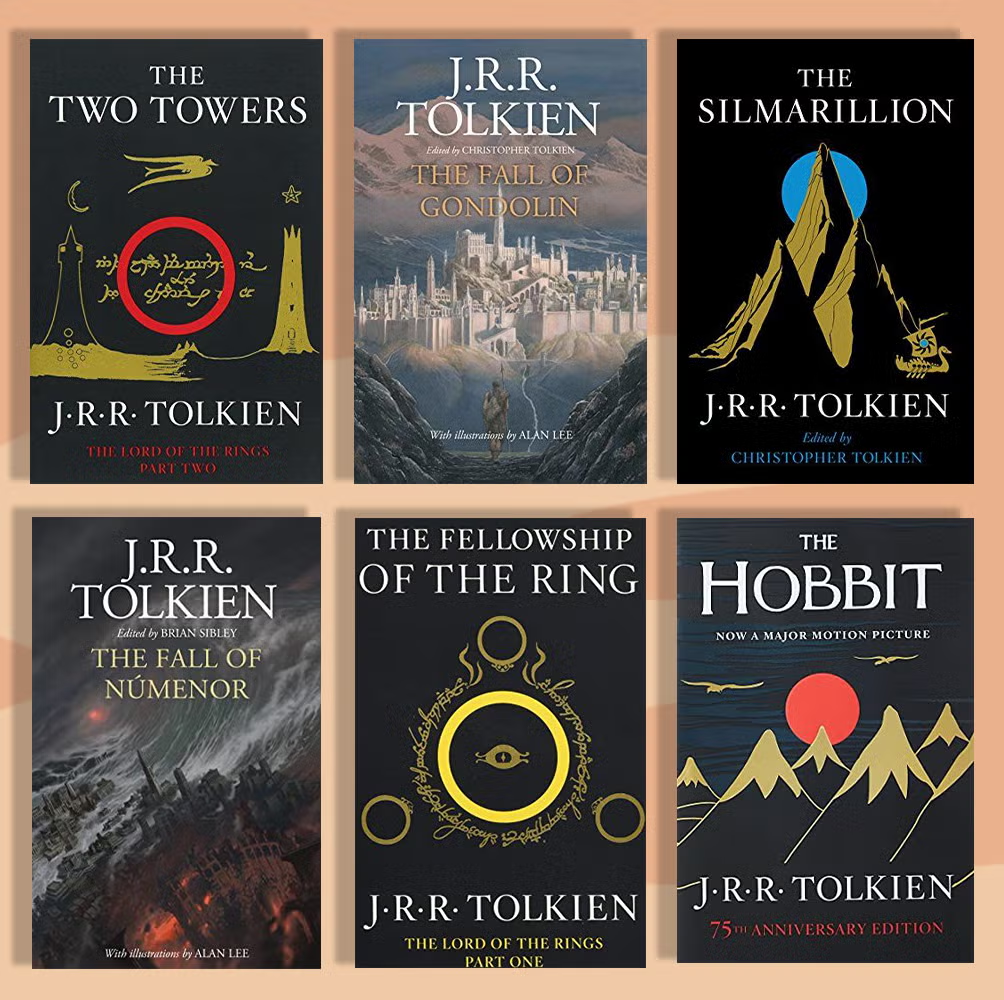
The Perfectionist’s Struggle: Crafting a Masterpiece
Tolkien’s journey to complete The Lord of the Rings was long and challenging, beginning in 1937 and lasting over a decade. His meticulous nature led him to revise and expand his ideas repeatedly, making the writing process slow and complex. He often set the manuscript aside, sometimes for years, as he balanced his academic responsibilities at Oxford with family life. His deep commitment to linguistic accuracy meant that he constantly refined the Elvish languages, ensuring they felt authentic and lived-in. Tolkien also struggled with narrative structure, carefully weaving together multiple storylines while maintaining consistency in Middle-earth’s vast history.
Despite these challenges, Tolkien’s passion for mythology and storytelling drove him forward, shaping The Lord of the Rings into an unparalleled work of fiction. His vast knowledge of ancient texts, from Norse epics to Arthurian legends, influenced the novel’s themes of heroism, destiny, and sacrifice. He borrowed from real-world histories, creating cultures with deep traditions and believable conflicts. Biblical themes, such as the burden of temptation and the struggle between good and evil, also played a role in shaping the narrative. Although he doubted whether the book would ever be finished, his determination never wavered. By 1949, after twelve years of relentless work, he finally completed what would become one of the most celebrated novels of all time.
The Struggle to Bring Middle-earth to Readers
By 1949, after twelve years of writing, Tolkien had completed The Lord of the Rings, but securing a publisher proved difficult. The novel’s length, intricate storytelling, and complex world-building made publishers hesitant to take the financial risk. Allen & Unwin, which had published The Hobbit, was interested but unwilling to release it as one volume due to high printing costs. Tolkien, who envisioned the story as a unified epic, was disappointed but had little choice. To make publication feasible, the novel was split into three volumes, a decision that shaped its legacy in unexpected ways. Despite his frustration, Tolkien remained committed to his vision, ensuring the integrity of his work remained intact throughout the publishing process.
Although divided into The Fellowship of the Ring (1954), The Two Towers (1954), and The Return of the King (1955), Tolkien insisted The Lord of the Rings was one novel, not a trilogy. He even disliked the title of the final book, believing it revealed too much of the story. However, the serialized format helped its success, allowing readership to grow steadily. Early reviews were mixed, with some critics calling it overly ambitious, but fans embraced its depth. Over time, its influence grew beyond literature, inspiring generations of fantasy writers and securing its place as one of the greatest works in literary history.
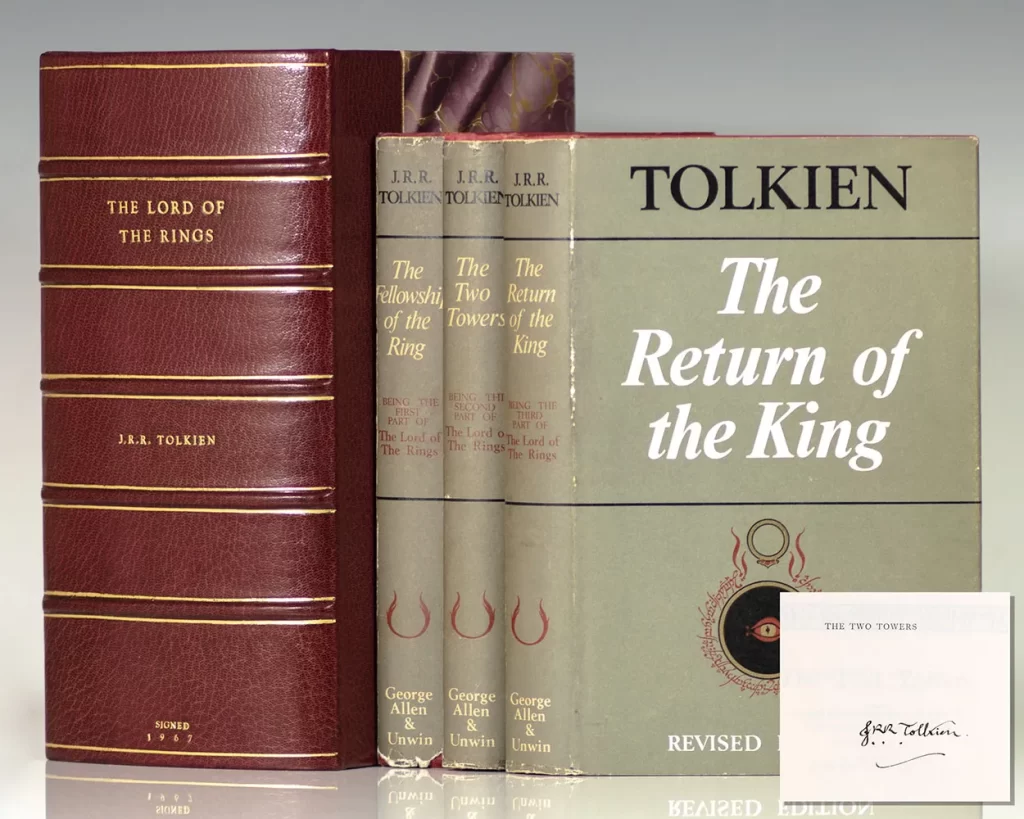
The Lure of Power and Its Consequences
In The Lord of the Rings, power is a central force that tempts and corrupts even the noblest characters. The One Ring, a symbol of absolute control, slowly warps the minds of those who come near it. Boromir, though a brave warrior, falls to its temptation, believing he could use it for good. Gollum, once a simple creature named Sméagol, is transformed into a shadow of his former self, consumed by obsession. Even Frodo, despite his resilience, struggles against its influence. Tolkien, who witnessed the devastation of war, infused the story with his distrust of unchecked authority, portraying Sauron’s oppressive rule as the ultimate warning against tyranny.
Although The Lord of the Rings explores power’s dangers, it also offers a message of redemption. Aragorn, initially reluctant to claim his throne, accepts his role as king and restores hope. Frodo, despite being scarred by his journey, endures and ultimately spares Gollum, a moment that leads to Sauron’s downfall. Gollum himself, torn between his past and present, serves as a tragic example of how power can destroy yet still leave room for moments of humanity. These arcs highlight Tolkien’s belief in resilience and the possibility of redemption, themes that continue to resonate with readers. Through struggle and sacrifice, even those tainted by darkness have a chance to find light.
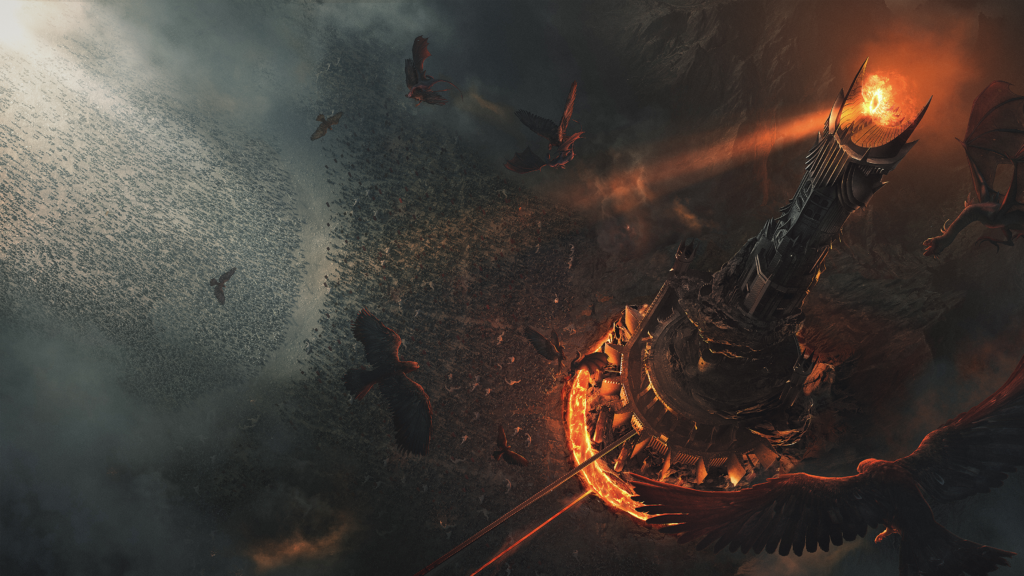
The Depth and Realism of Middle-earth
Tolkien’s world-building in The Lord of the Rings is unmatched, creating a universe that feels as rich and complex as real-world mythology. Middle-earth is more than a backdrop; it is a fully realized world with diverse cultures, detailed histories, and evolving languages. The Elves, Dwarves, and Men each have unique traditions, architecture, and belief systems, reflecting Tolkien’s deep understanding of ancient civilizations. His expertise in philology allowed him to craft functional languages like Quenya and Sindarin, giving Middle-earth a level of authenticity rarely seen in fiction. Even Orcish, though crude, follows linguistic rules. The result is a world that breathes with life, where each kingdom, from Rivendell to Rohan, feels distinct and grounded in its own traditions and lore.
Beyond its cultures, the geography of Middle-earth further immerses readers in its grandeur. From the peaceful, rolling hills of the Shire to the barren, volcanic wastelands of Mordor, Tolkien’s vivid descriptions paint landscapes that feel tangible. Every location has a history, shaping the peoples who live there. The ruins of Númenor, the vast forests of Lothlórien, and the Mines of Moria are not just places but remnants of long-lost eras. Maps, appendices, and ancient texts woven throughout The Lord of the Rings reinforce the illusion of a real-world history, making Middle-earth feel like a forgotten past rather than a fictional creation. This depth continues to inspire world-building in fantasy literature today.
The Many Faces of Heroism in Middle-earth
Tolkien’s heroes in The Lord of the Rings are not defined by strength alone but by their resilience, loyalty, and personal growth. Frodo Baggins, an ordinary hobbit, shoulders an immense burden, proving that even the smallest individual can change the course of history. Samwise Gamgee, his steadfast companion, embodies devotion and bravery, never wavering in his support. Aragorn, born into a forgotten royal lineage, evolves from a self-doubting ranger into the noble King of Gondor. His path reflects the archetypal hero’s journey, filled with trials, sacrifices, and ultimate triumph. Meanwhile, Gandalf serves as the Fellowship’s guiding light, offering wisdom and protection, yet also undergoing transformation, returning as Gandalf the White after his battle with the Balrog in Moria.
The diversity within the Fellowship reinforces Tolkien’s message that heroism comes in many forms. Legolas, the Elven archer, represents agility and keen perception, while Gimli, the sturdy Dwarf warrior, showcases resilience and fierce loyalty. Despite their initial prejudices, they forge an unbreakable friendship, symbolizing unity beyond cultural divides. Boromir, flawed yet courageous, demonstrates the human struggle between ambition and duty, ultimately redeeming himself in battle. Each character contributes uniquely, proving that true heroism is not about physical power but about courage, sacrifice, and integrity. Through The Lord of the Rings, Tolkien presents a compelling narrative where characters grow through adversity, showing that even the most unlikely individuals can rise to greatness.
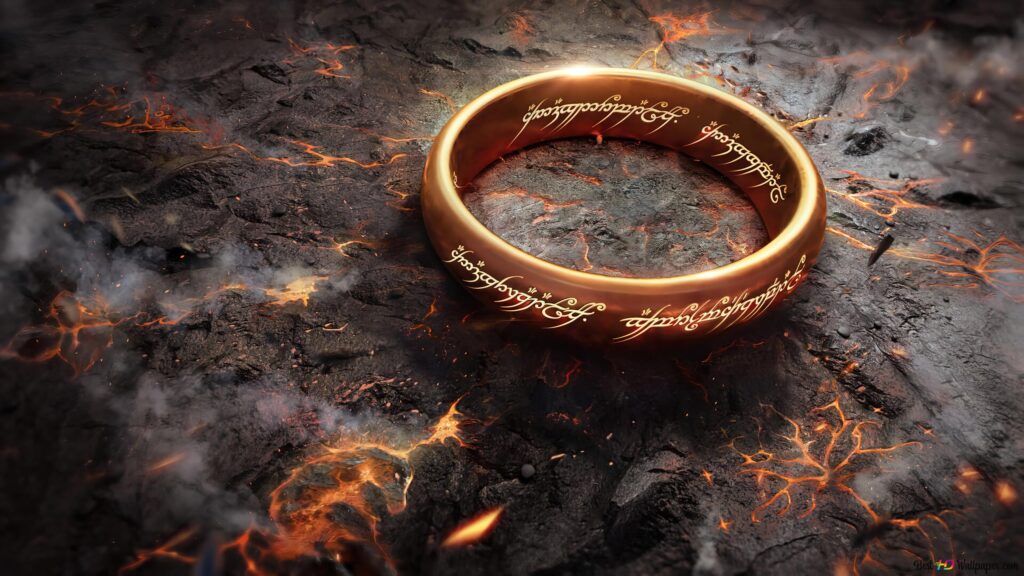
War and History’s Impact on Middle-earth
Although Tolkien denied that The Lord of the Rings was a direct allegory, his experiences in World War I and the global conflicts of his time deeply shaped his storytelling. Serving in the Battle of the Somme, he witnessed firsthand the horrors of war, the loss of friends, and the enduring strength of camaraderie. These themes resonate in the Fellowship, where individuals from different backgrounds unite against a great evil. The desolation of battle-ravaged lands, such as the ruins of Osgiliath and the wastelands of Mordor, reflect the devastation Tolkien saw in war.
Beyond personal experiences, Tolkien infused The Lord of the Rings with historical depth, reflecting the rise and fall of real-world civilizations. The downfall of Númenor parallels the legendary tale of Atlantis, while Gondor’s decline resembles the slow weakening of the Roman Empire. The Shire’s industrialization under Saruman’s rule reflects Tolkien’s own disdain for unchecked modernization, echoing the destruction of rural England by factories and war. Even Sauron’s dominance evokes totalitarian regimes, highlighting the dangers of power concentrated in the hands of the few. By weaving these historical influences into Middle-earth, Tolkien crafted a world that, while fantastical, feels deeply rooted in the struggles, triumphs, and tragedies of human history.
Tolkien’s Lasting Influence on Fantasy Literature
Before The Lord of the Rings, fantasy literature was often dismissed as simplistic or purely for children. Tolkien redefined the genre, proving it could be complex, mature, and intellectually engaging. His meticulous world-building, detailed histories, and deep philosophical themes set a new standard, inspiring countless authors. The depth of Middle-earth, with its languages, cultures, and histories, showed that fantasy could rival real-world mythology in scope. His influence is evident in the works of George R.R. Martin, whose intricate political landscapes mirror Tolkien’s, and in Brandon Sanderson’s elaborate magic systems. Even J.K. Rowling’s Harry Potter series draws from his narrative structure. By elevating fantasy to a serious literary form, Tolkien paved the way for the genre’s enduring popularity.
The tropes found in The Lord of the Rings have become foundational elements of modern fantasy. The concept of a reluctant hero, seen in Frodo Baggins, appears in many later works, from Rand al’Thor in The Wheel of Time to Harry Potter. The struggle between good and evil, embodied by Sauron’s dark forces against the Free Peoples of Middle-earth, remains a staple of fantasy storytelling. The races of elves, dwarves, and orcs—so vividly defined by Tolkien—are now common in books, films, and games. His storytelling approach, blending mythological depth with adventure, continues to inspire new generations of writers, ensuring that his impact on fantasy literature remains unmatched.
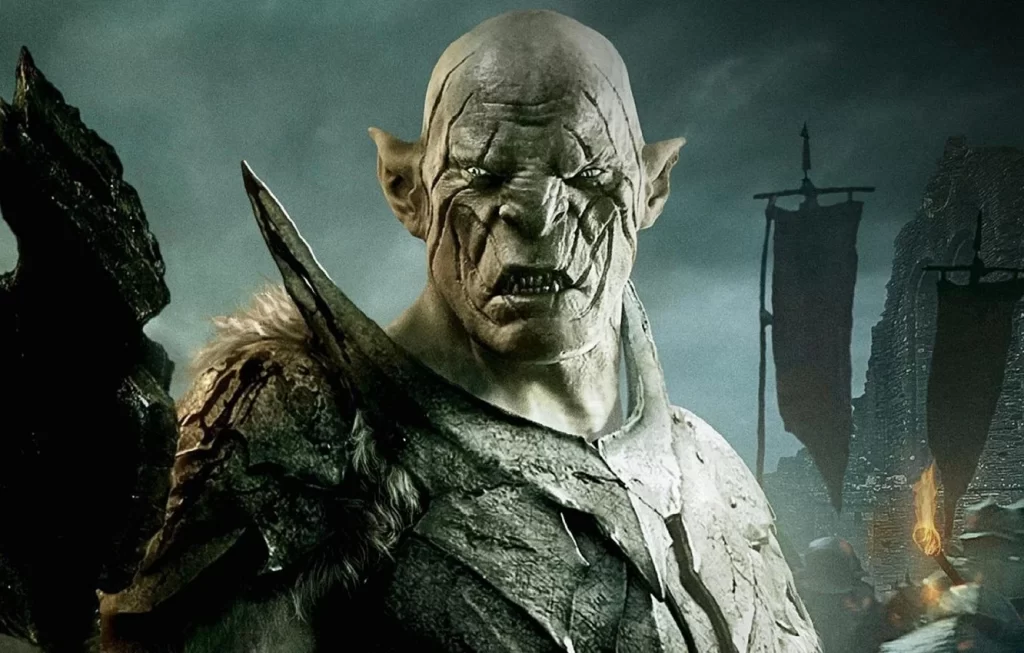
The Enduring Legacy of Middle-earth on Popular Culture
The influence of The Lord of the Rings extends far beyond the literary world, leaving a lasting imprint on modern entertainment and culture. Peter Jackson’s film adaptations (2001–2003) brought Tolkien’s epic to the big screen, introducing Middle-earth to a new generation of fans. The trilogy’s stunning visuals, groundbreaking special effects, and powerful storytelling earned critical acclaim, winning 17 Academy Awards, including Best Picture for The Return of the King. The films remained largely faithful to the novel’s themes of friendship, sacrifice, and the struggle between good and evil. They also set new standards for fantasy filmmaking, inspiring later franchises such as Game of Thrones and The Witcher, both of which owe much to Tolkien’s narrative depth and world-building.
Beyond cinema, the impact of The Lord of the Rings can be seen in video games, music, and even political discourse. Games like The Elder Scrolls and World of Warcraft draw heavily from Tolkien’s world, incorporating elves, dwarves, and expansive mythologies. Musicians, including Led Zeppelin, have referenced Tolkien’s work in their lyrics, further cementing its influence across artistic mediums. Phrases such as “One Ring to rule them all” have entered popular culture, symbolizing absolute power and its dangers. Even discussions on government and resistance against oppression often reference the story’s themes. Decades after its publication, Tolkien’s masterpiece remains a cultural touchstone, proving that great storytelling transcends time and medium.
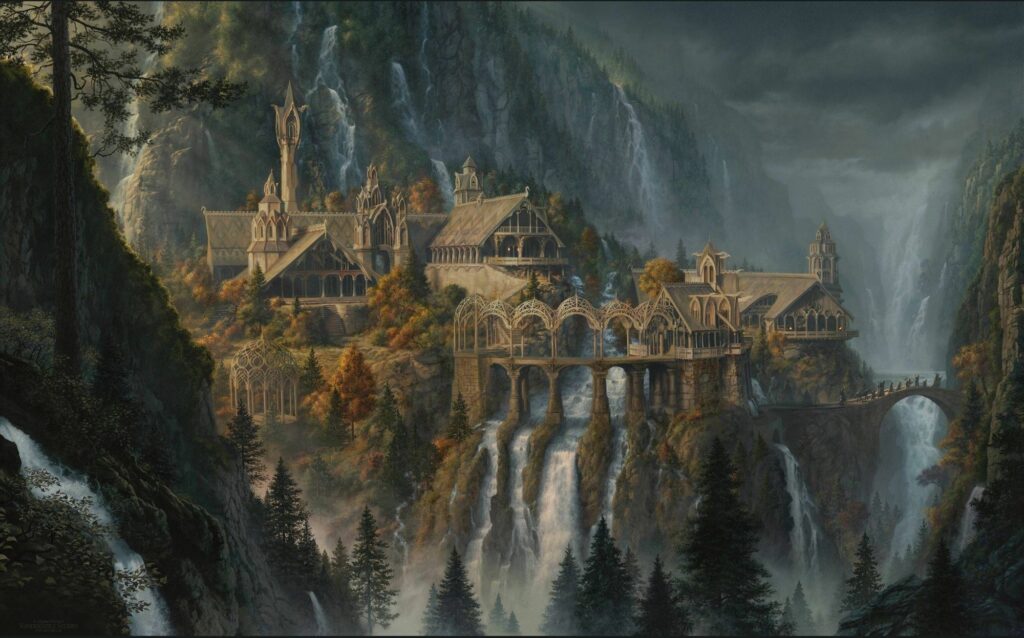
The Timeless Magic of Middle-earth
Even decades after its publication, The Lord of the Rings continues to captivate readers with its timeless themes and rich storytelling. Friendship, sacrifice, and resilience are at the heart of the novel, making it deeply relatable across generations. Readers return to Tolkien’s world, finding new meaning in its pages, whether through Frodo’s burden, Aragorn’s destiny, or Sam’s unwavering loyalty. The novel’s intricate world-building also invites endless exploration, from linguistic studies of Elvish to uncovering hidden historical influences. Each reread offers fresh insights, revealing layers of mythology, philosophy, and moral complexity. This depth ensures that Middle-earth remains more than just a fantasy setting—it is a literary masterpiece that evolves with the reader’s own understanding of life and heroism.
The relevance of The Lord of the Rings endures in an ever-changing world, offering hope and wisdom in times of uncertainty. Tolkien’s message of perseverance against overwhelming darkness speaks to readers facing their own struggles. The story’s battle between good and evil, with its emphasis on courage and unity, resonates in different cultural and historical contexts. As technology advances, new generations continue to experience Middle-earth through films, adaptations, and academic studies. Yet, at its core, the power of Tolkien’s storytelling remains unchanged. As long as there are readers willing to embark on the journey, his legacy will continue to inspire, reminding the world of the enduring magic of imagination and the strength found in even the smallest of heroes.
A Legacy That Transcends Generations
Tolkien’s The Lord of the Rings stands as one of the most significant literary achievements of all time, redefining the fantasy genre and elevating it to a level of depth and sophistication rarely seen before. Its intricate lore, well-developed characters, and universal themes have cemented its place in literary history. Beyond being an epic adventure, the novel delves into profound reflections on humanity, power, sacrifice, and the nature of good and evil. Readers continue to be drawn to Middle-earth not just for its thrilling battles and mythical creatures but for the emotional weight behind its characters’ struggles. The story’s ability to blend heroism with vulnerability makes it relatable, ensuring its impact remains strong across generations and cultural backgrounds.
More than just a fantasy novel, The Lord of the Rings serves as a testament to the boundless potential of human imagination. Tolkien’s world-building, influenced by mythology, history, and linguistics, showcases a level of detail that few works have ever matched. Whether approached as a philosophical reflection, an allegory of war, or a beautifully written tale of perseverance, it offers something unique to every reader. Its ability to inspire new generations of writers, artists, and filmmakers speaks to its lasting power. As long as people seek stories of adventure, courage, and hope, Tolkien’s vision will endure, proving that great literature never fades—it only grows stronger with time.
How useful was this post?
Click on a star to rate it!
Average rating / 5. Vote count:
No votes so far! Be the first to rate this post.
Author
-
Meet Dr. Kendall Gregory, a highly accomplished professional with a remarkable academic background and a deep passion for empowering individuals through knowledge. Dr. Gregory’s educational journey began with a Bachelor of Science degree, followed by a Doctor of Chiropractic Medicine, focusing on diagnosing and treating musculoskeletal conditions. He further expanded his expertise with a Master's degree in Oriental Medicine, specializing in acupuncture and Chinese herbology, and a Master's degree in Health Care Administration, emphasizing his dedication to improving healthcare systems. Dr. Gregory combines his extensive knowledge and practical experience to provide comprehensive and integrative healthcare solutions. Through his writings, he aims to inspire individuals to take charge of their health and make informed decisions.
View all posts

